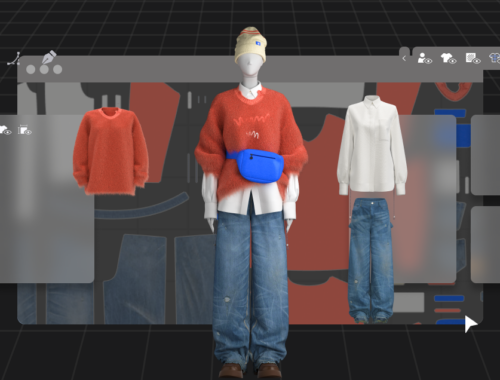Like Ducks? Thank a Hunter.
>
If you don’t have a positive opinion of hunting it’s because you don’t know enough about it. Nowhere does that ring more true than in the case of ducks. These animals thrive in North America today for one reason: Hunters.
In the early 1900s, Americans realized they had a environmental crisis on their hands. Wild animals had initially been viewed by European settlers as an unlimited resource, but America’s exploding population, its westward expansion, industrialized agriculture, and unregulated hunting had all combined to decimate the population of wilfdlife—from deer to ducks.
This gave rise to the modern conservation movement, which used sport hunting as a tool to successfully save our wildlife. (I detail how that worked for elk here.)
Ducks and other waterfowl found themselves in a particularly tight spot due to massive losses of suitable habitat. The wetlands they depend on were disappearing across the continent. And that wasn’t going to be an easy trend to reverse. Cities had sprung up in marshes that were once home to millions of birds. The wheat we now grew filled in wetlands throughout the Mississippi River basin. The grasslands had become other crops, and those were filled with chemical fertilizers and pesticides. If their homes weren’t destroyed outright, ducks found their food supply diminished and their habitat poisoned.
And unlike hoofed mammals, protecting small, specific areas would do ducks no good. Their migrations span the continent.
The result of all this degradation: the estimated population of waterfowl on this continent fell as low as 27 million by the early 1930s. Efforts to reverse this trend had begun two decades previously. In 1916, the U.K. signed a treaty on behalf of Canada banning market hunting of waterfowl and protecting their habitats. In 1918, Congress ratified that treaty with the Migratory Bird Treaty Act. Mexico signed on in 1936.
Those efforts were well meant, but the treaty didn’t provide significant funding for protecting, restoring, or reclaiming habitats. Without a source of funding, ducks were still screwed.
Enter Ding Darling, a Pulitzer Prize-winning editorial cartoonist and passionate duck hunter. In addition to ducks, Darling often drew President Franklin Roosevelt, whose policies and politics he ridiculed. By 1934, Roosevelt had had enough, and in an effort to eliminate two problems at once (Darling’s criticism and the waterfowl-population crisis), he appointed Darling as head of the U.S. Biological Survey, a predecessor to the Fish and Wildlife Service.
It wasn’t an easy job. Smack in the middle of both the Great Depression and the Dust Bowl, there wasn’t extra money to be spent on wildlife. If he was going to save the duck’s habitat, Darling needed to find a new source of funding from outside the government. He came up with a law called the Duck Stamp Act, which was passed almost immediately by Congress. It levied an additional $1 fee on waterfowl hunters, in addition to the licenses they already purchased from state and local governments. The proceeds would go toward reclaiming and protecting duck habitat. Darling designed the first stamp himself.
Today, the federal duck stamp costs $25, and its design is chosen from an annual art contest that receives hundreds of entries. 98 percent of revenue from duck stamps goes to protecting duck habitat, of which it’s purchased and protected 6.5 million acres to-date. Duck stamps are largely responsible for financing our nation’s Wildlife Refuge system, and purchase of one grants you access to those protected lands for the year. Many people buy two stamps—one to sign up for hunting, and one to keep as an appreciating collectible.
If you care about waterfowl conservation, there is no better way to help than by purchasing a duck stamp. You don’t need to be a hunter to buy one, but 1.1 million of the 1.6 million people who do get one each year are.
Darling has been called, “the best friend a duck ever had.” He would go on to found the National Wildlife Federation.
Darling may have been the pioneer, but he was soon joined by other hunters, who saw a need to go even further than the federal government could. Treaties could stretch across borders, but federal funding couldn't.
Enter Ducks Unlimited. With a mission to create “wetlands sufficient to fill the skies with waterfowl today, tomorrow and forever,” Ducks Unlimited is a non-profit dedicated to wetlands conservation. Founded in 1937, it now counts 600,000 members, 90 percent of whom are duck hunters. Last year, it raised $224 million—83 percent of which was spent directly to protect wetlands. In its 80-year history, Ducks Unlimited has protected 14 million acres of wetlands spanning North America.
Additionally, Ducks Unlimited is $1.82 billion in to raising $2 billion for a campaign it's calling Rescue Our Wetlands. Expected to meet its goal this year, it will be the largest wetlands restoration program in world history.
Combined, the duck stamp, and Ducks Unlimited have roughly doubled the population of waterfowl on this continent to 50 million. (Heck, it’s the duck stamp that pays for the birds to be counted.) It’s impossible to tabulate the benefit hunter-funded wetlands conservation has had on the over 900 non-game species that also rely on wetlands habitat—including 96 percent of all our birds.
So in roughly the same time frame that hunters managed to double the duck population and protect over 20 million acres of wetlands, the human population in U.S., Canada, and Mexico has tripled. It’s hard to know how much wetland we’ve lost in that time, but a study commissioned by Congress in the 1980s found that our country alone, 30 years ago, had already lost over 50 percent of its these rich ecosystems. And Ducks Unlimited says the pace of wetlands loss is increasing, despite its efforts.
I think it’s also important to put the contribution hunters have made to waterfowl conservation into perspective in another way. There are 47 million birdwatchers in the U.S., but only 2.6 million waterfowl hunters. Conservation of wetlands falls disproportionately on the shoulders of hunters. And that’s a problem because hunter participation is decreasing. With fewer hunters, who’s going to pay for wildlife conservation?
And that’s why I’m telling you all this. Hopefully it can break the anti-hunting stigma, and maybe even encourage you to participate in wildlife conservation. At the very least, maybe all this will encourage you to start a stamp collection.
Special thanks to RJ Waldron of Northwind Outfitters, who took us on our first duck hunt. He guides waterfowl, upland, big game, and fishing trips throughout California, any of which would be great for experienced hunters or beginners alike.
You May Also Like

ユニットハウスのメリットとデメリットを徹底解説
March 20, 2025
ユニットハウスのメリットとデメリットを徹底解説
March 22, 2025